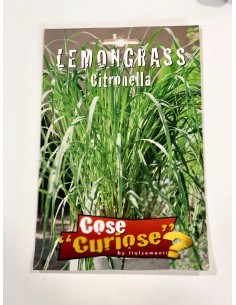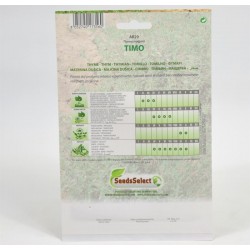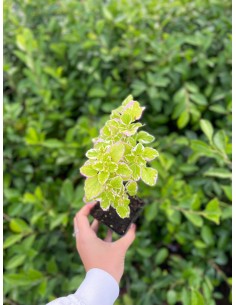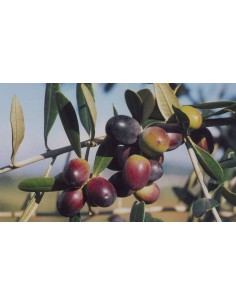copy of Genovese Basil Plant
Generality of the Genovese Basil Plant:
Genoese basil is one of the most used aromatic plants in the kitchen. It has an intense, well marked and strongly aromatic smell. The large, green leaves are harvested and eaten fresh in order to maintain their smell and aroma. In the kitchen the recipes are numerous, is consumed individually chopped to prepare the "pesto alla Genovese", or together with other ingredients such as mixed salads. Basil as well as fresh, can also be preserved in oil or frozen.
On-line Sale of the Genovese Basil plant, available in the following sizes:
- Vase 14cm, Height: 20/30cm
On-line Sale Of the Genovese Basil plant, available in the following sizes:
- Vase 14cm, Height: 20/30cm
Generality of the Genovese Basil Plant:
The basil is from Asia Minor that has come a long way before touching our lands: imported for centuries now far in Europe, it has chosen Liguria and Provence as lands of choice. Only on these hills the basil has found the ideal environmental conditions to grow with organoleptic characteristics completely unobtainable elsewhere. It has oval and convex leaves, medium-small and pale green. Its scent is delicate and doesn't have that trace of mint that we find in other varieties. It is usually used for the preparation of Genoese pesto, but it can also be added to salads, pizzas and sandwiches. Only fresh or dried leaves are used in basil. The fresh leaves of the Genovese Basil are the main ingredient of pesto, synonymous and symbol of Genoa and the whole of Liguria, for some decades among the most known and widespread sauces in the world. Whole or in pieces, thanks to their fresh flavor, they are also suitable for egg dishes, such as omelettes or scrambled eggs; they are excellent with fish, especially with mullet and lobster; with Mediterranean vegetables like aubergines, zucchini, peppers and tomatoes.
Cultivation and Care of the Genovese Basil Plant:
The optimal temperatures of cultivation of the basil plant are between 20 - 25 ° C but with a good moisture content it will tolerate even higher temperatures. It is a plant that grows in full sun and can be grown very well both in pots and in the ground. Temperatures below 10 ° C are not well tolerated. The basil should be watered generously but paying attention to the water stagnations that are not appreciated. Repotting should be carried out when the young seedlings are planted in the spring. It is not a particularly demanding plant in terms of land, the important thing is that it is a fertile soil, with a neutral pH and well draining as it does not like water stagnations. Considering that they are plants that must be watered very generously and that they do not tolerate water stagnations, use earthenware pots that allow the soil to breathe.
















